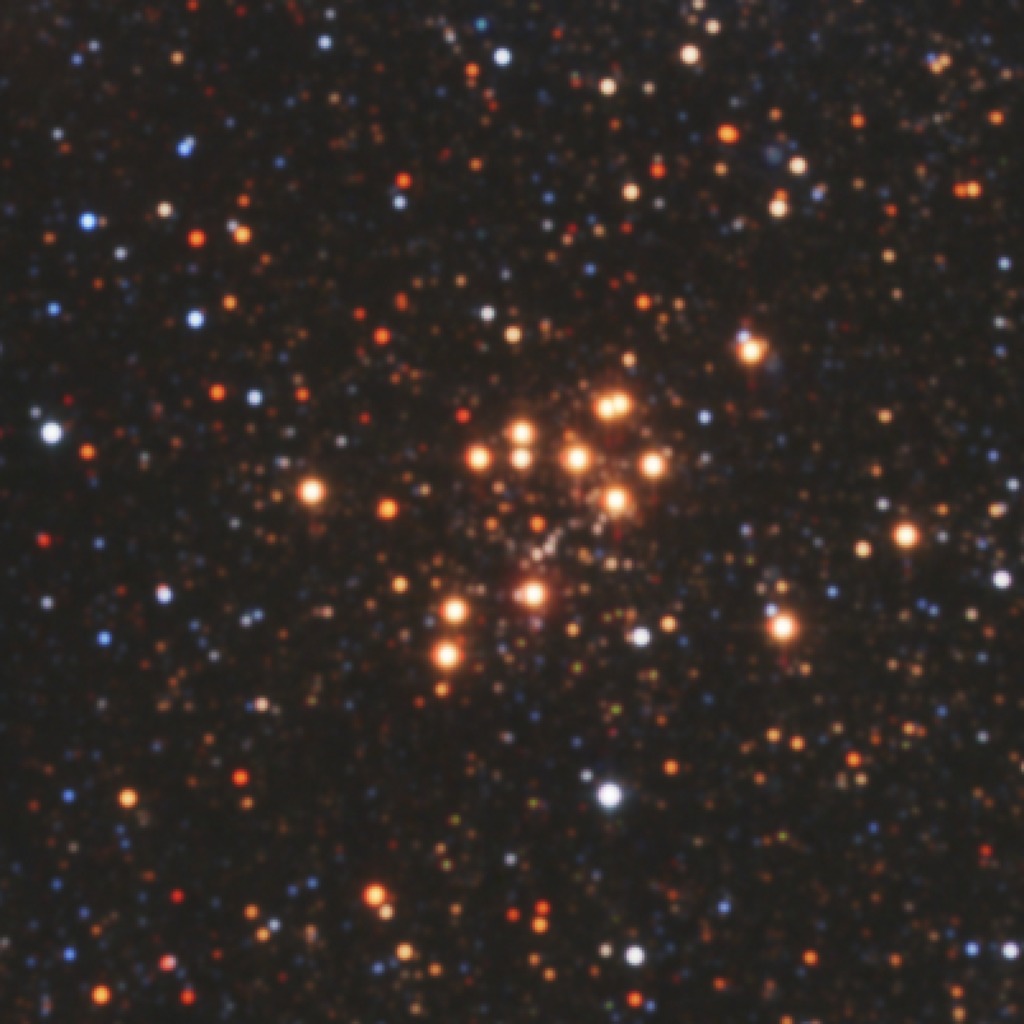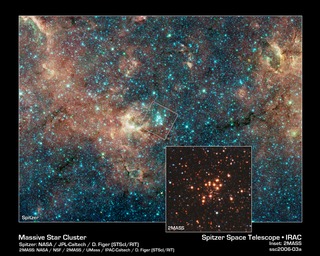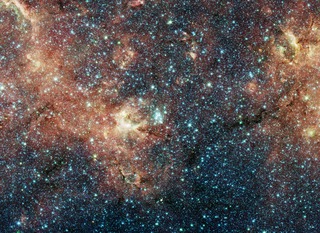
Credit: NASA/NSF/2MASS/UMass/IPAC-Caltech/D. Figer (Space Telescope Science Institute/Rochester Institute of Technology)
Observation • January 9th, 2006 • ssc2006-03a2
ssc2006-03a2
The sky is a jewelry box full of sparkling stars in these infrared images. The crown jewels are 14 massive stars on the verge of exploding as supernovae.
These hefty stars reside in one of the most massive star clusters in the Milky Way Galaxy. The bluish cluster is inside the white box in the large image, which shows the star-studded region around it. A close-up of the cluster can be seen in the inset photo.
These large stars are a tip-off to the mass of the young cluster. Astronomers estimate that the cluster is at least 20,000 times as massive as the Sun. Each red supergiant is about 20 times the Sun's mass.
The image, a false-color composite, was captured by the Two Micron All Sky Survey (2MASS). Astronomers identified the cluster as a potential behemoth after spotting it in the 2MASS catalogue. They then used the Infrared Multi-object Spectrograph at the Kitt Peak National Observatory in Arizona to analyze the cluster's colors. From that analysis, they discovered the red supergiants. They confirmed the red supergiants' pedigree by studying the colors of other red supergiants in data taken by the Spitzer Space Telescope.
The cluster lies 18,900 light-years away in the direction of the constellation Scutum. It is the first in a survey of 130 potentially massive star clusters in the Milky Way that astronomers will study over the next five years using a variety of telescopes, including the Spitzer and Hubble space telescopes.
The 2MASS image was taken on July 4, 1999.
The science team that studied the star cluster consists of Don Figer, Space Telescope Science Institute/Rochester Institute of Techology; John MacKenty, Massimo Robberto, and Kester Smith, Space Telescope Science Institute; Francisco Najarro, Instituto de Estructura de la Materia in Madrid, Spain: Rolf Kudritzki, University of Hawaii in Honolulu; and Artemio Herrero, Universidad de La Laguna in Tenerife, Spain.
About the Object
- Name
- Massive Star Cluster
- Type
- Nebula > Type > Star Formation
- Star > Grouping > Cluster
- Star > Evolutionary Stage > Red Supergiant
- Distance
- 18,900 Light Years
Color Mapping
| Band | Wavelength | Telescope |
| Infrared | 1.3 µm | 2MASS |
| Infrared | 1.7 µm | 2MASS |
| Infrared | 2.2 µm | 2MASS |
Astrometrics
- Position ()
- RA =18h 37m 60.0s
- Dec = -5° 12' 0.0"
- Field of View
- 0.0 x 0.0 arcminutes
- Orientation
- North is up






